Currently, there is no documented instance of a meteorite causing a fatality to a person. However, even a minor cosmic object that inadvertently enters the Earth’s atmosphere possesses immense destructive capability, similar to that of nuclear weapons. Occasionally, as recent incidents have demonstrated, celestial guests can catch us off guard.
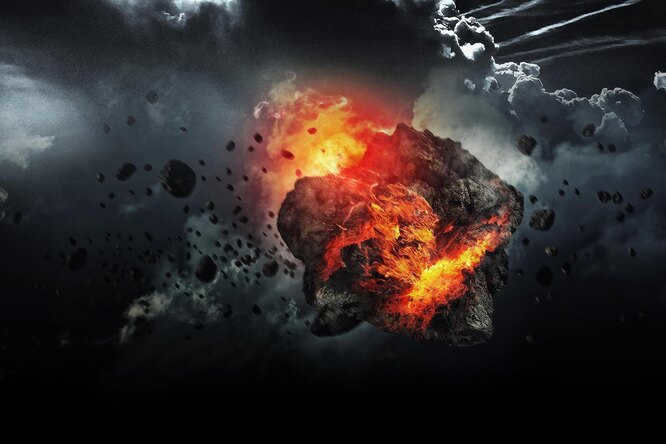
In 2018, a meteorite flying through the sky above Khabarovsk caused significant destruction to a mountain peak. The bolide that passed over Chelyabinsk also made a significant impact, both literally and figuratively, as it stunned onlookers with its dazzling brightness and powerful shockwave. This shockwave shattered windows, knocked down gates, and ripped off wall panels. While much has been written about the aftermath of these events, there has been relatively little discussion about the true nature of this phenomenon.
The Institute of Dynamics of Geospheres of the Russian Academy of Sciences, which has been studying and mathematically modeling the movement of meteoroids for a long time, was approached by “TechInsider” to gain a deeper understanding of the processes that occur with small celestial bodies that encounter planet Earth. Here is what we discovered.
To stay connected and informed, follow us on Yandex.Zen and make sure to subscribe to our channels on Telegram, VKontakte, and Odnoklassniki!
Expelled from the asteroid belt
Entities similar to Chelyabinsk’s originate from the primary asteroid belt, which is situated between the paths of Mars and Jupiter. Although it is not in close proximity to Earth, the asteroid belt occasionally experiences cataclysmic events: larger objects collide, resulting in fragmentation and some of the fragments transitioning into near-Earth space bodies whose orbits intersect with our planet’s orbit. On occasions, disturbances caused by massive planets can propel celestial rocks out of the belt. The trajectory data of the Chelyabinsk meteorite indicates that it belonged to the Apollo group – a collection of small celestial bodies that orbit the Sun in elliptical paths, crossing the Earth’s orbit and having a perihelion (i.e., the closest distance to the Sun) that is smaller than that of the Earth’s orbit.
Due to their frequent origin as debris, these objects typically have irregular shapes. The majority of them consist of a rock known as chondrite. This name was assigned to it because of the presence of chondrules – rounded or elliptical mineral grains with a diameter of approximately 1 mm (occasionally larger), surrounded by a fragmented or finely crystalline matrix. Chondrites come in various types, although iron specimens can also be found among meteoroids. Interestingly, metallic bodies make up less than 5% of the total, but iron meteorites and their fragments are certainly the most prevalent. There are a couple of reasons for this: firstly, chondrites are visually indistinguishable from regular terrestrial rocks, making them challenging to identify, and secondly, iron is more robust, increasing the likelihood of iron meteorites surviving the dense layers of the atmosphere without breaking apart into smaller fragments.
The destiny of a meteoroid is determined not only by its size and the physical and chemical properties of its substance, but also by the velocity at which it enters the atmosphere, which can vary across a wide range. However, in all cases, we are referring to extremely high speeds, surpassing even those of supersonic airplanes and orbiting spacecraft. The average re-entry velocity is 19 km/s, but if the meteoroid intersects with the Earth on a trajectory close to a head-on collision, the velocity can reach 50 km/s, equivalent to 180,000 km/h. The lowest entry speed into the atmosphere occurs when the Earth and a small celestial body are moving in neighboring orbits, in close proximity to each other, until our planet attracts the meteoroid.
The higher the velocity at which the celestial body enters Earth’s atmosphere, the more stress it experiences, the farther it disintegrates from our planet, and the higher the likelihood of it breaking up before reaching the surface. In Namibia, there is a massive metal block, comprising 84% iron along with nickel and cobalt, enclosed by a meticulously constructed fence in the shape of a small amphitheater. Weighing 60 tons, it stands as the largest individual piece of extraterrestrial material ever discovered on our planet. The meteorite impacted Earth approximately 80,000 years ago, leaving no visible crater in its wake. Presumably, the minimal speed at which it descended can be attributed to fortuitous circumstances, as a comparable, metal-rich Sikhote-Alin meteorite (1947, Primorsky Krai) fragmented upon entry and created an extensive field of craters along with a vast distribution of smaller fragments, which are still being collected in the Ussuri taiga.
What is causing a massive explosion in the sky?
Prior to its impact on Earth, a meteorite has the potential to be incredibly dangerous, as demonstrated by the Chelyabinsk incident. Hurtling through the atmosphere at an astonishing velocity, the celestial object creates a powerful shock wave, which superheats the surrounding air to temperatures exceeding 10,000 degrees Celsius. The intense heat causes the meteoroid to vaporize, surrounded by a captivating halo of ionized gas known as plasma. This phenomenon is a result of the radiation emitted by the heated air. Additionally, the shock wave creates a high-pressure area in front of the meteorite, testing the durability of its leading edge. The pressure on the sides, however, is considerably lower. As a consequence of this pressure gradient, the meteorite is highly prone to fragmentation. The exact manner in which this fragmentation occurs is contingent upon factors such as the meteoroid’s size, shape, and structural characteristics including cracks, notches, and cavities.
Another important aspect to consider is that when a bolide disintegrates, its cross-sectional area expands, resulting in an immediate increase in the release of energy. The volume of gas that the object captures also expands, causing more and more kinetic energy to be converted into thermal energy. This rapid escalation of energy release within a confined space over a short period of time can only be described as an explosion. It is during this moment of disintegration that the brightness of the bolide intensifies, creating a brilliant flash. Additionally, the surface area of the shock wave and the mass of the air that is heated by the shock wave both increase significantly. Unlike a conventional or nuclear explosion where the shock wave is spherical, this is not the case with a meteorite. When a small celestial body enters the Earth’s atmosphere, it forms a conical shock wave (with the meteoroid at the apex of the cone) similar to the shock wave generated in front of the nose of a supersonic aircraft.
The disintegration of a meteoroid can create a shockwave that poses a greater threat than the impact of a large piece of debris. The accompanying image reveals a noticeable puncture in the ice of Lake Chebarkul, likely caused by a fragment of the Chelyabinsk meteorite.

One of the mysteries surrounding large meteorites (bolides) involves the occurrence of electrophonic bolides. In this particular scenario, individuals who witness the passage of a small cosmic object in the sky also hear a distinct rustling sound emanating from the bolide. It is clear that the sound waves cannot reach the observer’s ears instantaneously. It is believed that the rustling sound is a result of the interaction between the electromagnetic radiation emitted by the bolide and the Earth’s surface surrounding the observer. However, the exact nature of this interaction remains unknown. There is evidence to suggest that the electrophonic effect was also observed during the Chelyabinsk bolide’s passage.
The extent to which the shock wave affects the Earth’s surface is determined by the trajectory, mass, and velocity of the object. In the case of the Chelyabinsk meteorite, it followed a relatively gentle path, resulting in its shock wave only impacting the outskirts of urban areas. The majority of meteorites (75%) enter the atmosphere at angles greater than 30 degrees, and the extent of their impact depends on the altitude at which their main braking phase occurs. Typically, this phase is associated with destruction and a significant release of energy. If this occurs at a high altitude, the resulting shock wave will be weaker upon reaching the Earth’s surface. However, if the destruction takes place at lower altitudes, the shock wave can cover a wide area, similar to the effects of an atmospheric nuclear explosion or the impact of the Tunguska meteorite.
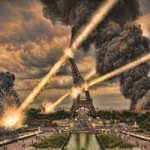
In our previous article, we evaluated the potential risk posed by asteroids coming from outer space. Now, let’s explore the potential consequences that could occur if (or rather, when) a meteorite of various sizes were to actually impact Earth.


The outcome and consequences of an event like a meteorite falling to Earth depend on various factors. Let’s discuss the main ones:
The size of the meteorite
The size of the meteorite is the most important factor to consider. Armageddon on our planet can be caused by a meteorite as large as 20 kilometers, so we will focus on scenarios involving meteorites ranging in size from a tiny speck of dust to 15-20 km. Anything larger would be pointless to consider, as the scenario would be straightforward and obvious.
Small celestial objects within our solar system can possess varying compositions and densities. Consequently, the consequences of an impact on Earth would differ depending on whether it was a stone or iron meteorite, or a loosely bound nucleus composed of ice and snow from a comet. In order to produce equivalent levels of destruction, a comet’s nucleus would need to be two to three times larger than an asteroid fragment of the same velocity during descent.
For informational purposes, it is worth noting that over 90 percent of all meteorites are rocky in nature.
Velocity
Velocity is also a crucial factor in the collision of objects. This is because there is a conversion of kinetic energy from motion into thermal energy. The velocity at which celestial bodies enter the Earth’s atmosphere can vary significantly, ranging from approximately 12 km/s to 73 km/s, and even higher for comets.
The slowest meteorites are the ones that are catching up to or have caught up with the Earth. Consequently, when they are on a collision course with our planet, their velocity combines with the Earth’s orbital velocity, causing them to pass through the atmosphere much more rapidly. As a result, the impact and subsequent explosion upon reaching the surface will be significantly more powerful.
Where will it land?
It’s difficult to predict whether it will fall into the sea or onto land. However, the extent of destruction will vary depending on the scenario.
In the event that a meteorite hits a nuclear weapons storage site or a nuclear power plant, the environmental damage caused by radioactive contamination could potentially surpass the impact of the meteorite itself, especially if the meteorite is relatively small.
Impact Angle
Plays a negligible role. When a celestial body collides with a planet at incredibly high speeds, the angle at which it falls does not significantly affect the outcome. This is because the kinetic energy of motion is always converted into thermal energy and released as an explosion, regardless of the angle of impact. The amount of energy released depends only on the mass and velocity of the object. As a result, craters, such as those found on the Moon, are always circular in shape, rather than trench-like craters formed at acute angles.
In this evaluation, let’s consider a fairly common rock meteorite, moving at a typical velocity (let’s say 30-40 km/sec), descending into the atmosphere at an average inclination (40-60°). We will solely modify the size.
Less than a few centimeters
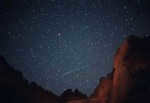
When meteors enter the Earth’s atmosphere, they completely disintegrate, creating a brilliant streak that can span several tens of kilometers. This well-known phenomenon is called a meteor. The largest meteors can reach altitudes of 40-60 km, but most of them burn up at an altitude of over 80 km.
It is a massive event, with millions of meteors entering the atmosphere in just one hour. However, the number of meteors visible to an observer depends on the brightness of the flashes and the observer’s field of view. On a clear night, one can expect to see a few to dozens of meteors in an hour, and during meteor showers, the number can exceed a hundred. In a single day, hundreds or even thousands of tons of meteor dust can accumulate on the Earth’s surface.
From centimeters to several meters
Bolides – the most brilliant meteors, whose brightness surpasses that of the planet Venus. The flash may be accompanied by loud noises, even resembling an explosion. As a result, a trail of smoke is left in the sky.
Space debris of this magnitude is capable of reaching the Earth’s surface. This is what occurs:
- The meteoroid collides with the Earth’s atmosphere, approximately 120 kilometers above the surface.
- Almost immediately, it begins to heat up and glow, gradually decelerating in speed.
- As it descends, it gathers more and more air molecules in front of it, leading to an area of increased pressure.
- If, at any point, the flying mass is unable to withstand the pressure it has accumulated, it will explode.
- Once the body or its fragments reach an altitude of several kilometers, their cosmic velocity is completely nullified, and they begin to descend under the influence of gravity.
In this scenario, stone meteoroids, and particularly ice meteoroids, typically disintegrate into pieces due to the explosion and heating. However, metal meteoroids are able to endure the pressure and remain intact as they descend to the ground:
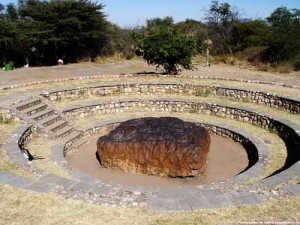
If the velocity of re-entry is extremely high (in the opposite direction), these meteoroids have a much smaller chance of reaching the surface due to the increased friction against the atmosphere. The meteoroid can break into hundreds of thousands of fragments, resulting in a phenomenon known as a meteor shower.
On any given day, Earth can experience the precipitation of several dozen small meteorite fragments weighing about 100 grams each. However, since most of them fall into the ocean and are difficult to distinguish from ordinary rocks, they are rarely found.
The frequency of objects entering our atmosphere that are approximately one meter in size is several times a year. If we are fortunate enough to witness the fall of such an object, there is a possibility of recovering substantial fragments weighing hundreds of grams or even kilograms.
The Chelyabinsk bolide: a colossal 17-meter spectacle

Superbolide – This term is sometimes used to describe particularly powerful explosions caused by meteoroids, like the one that occurred in February 2013 over Chelyabinsk. The initial size of the object that entered the Earth’s atmosphere at that time varies according to different experts’ estimates, but on average it is believed to be about 17 meters. The mass of the object is approximately 10,000 tons.
The object entered the Earth’s atmosphere at a steep angle (15-20 degrees) with a velocity of around 20 km/sec. It detonated after half a minute at an altitude of approximately 20 kilometers. The explosion had a power equivalent to several hundred kilotons of TNT. This is 20 times more powerful than the Hiroshima bomb, but the consequences were not as devastating because the explosion occurred at a high altitude and the energy was dispersed over a large area, mostly away from populated regions.
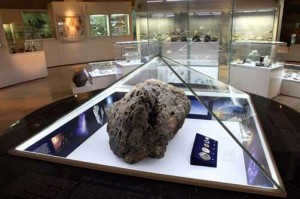
Less than one-tenth of the original mass of the meteoroid, which is estimated to be about a ton or less, made it to the Earth’s surface. The fragments were scattered across an area that stretches over 100 kilometers in length and about 20 kilometers in width. Numerous small pieces were discovered, some of which weighed kilograms, while the largest fragment, weighing 650 kg, was retrieved from the depths of Lake Chebarkul:
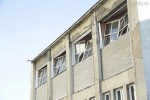
Impact: The meteorite fall caused extensive damage, with nearly 5,000 buildings affected, predominantly experiencing shattered windows and frames. Additionally, approximately 1.5 thousand individuals sustained injuries from glass shards.
A body of this magnitude could have potentially reached the surface without disintegrating. However, due to its steep entry angle, the meteoroid traveled several hundred kilometers through the atmosphere before detonating. Had the Chelyabinsk meteoroid fallen straight down, instead of causing an air shock wave that shattered glass, it would have made a powerful impact on the surface, resulting in a seismic shock and the formation of a crater measuring 200-300 meters in diameter. The extent of damage and number of casualties in such a scenario would depend on the location of impact.
Speaking of the likelihood of recurrence, the Tunguska meteorite event of 1908 is the most recent occurrence of a celestial body of comparable size colliding with Earth. This implies that it is possible for one or more similar cosmic intruders to visit our planet within a century.
Let’s leave behind children’s toys and move on to more important matters.
If you’ve read the previous article, you’re aware that objects in the solar system smaller than 30 meters are referred to as meteoroids, while those larger than 30 meters are considered asteroids.
Unlike meteoroids, if an asteroid, even a small one, were to collide with Earth, it wouldn’t disintegrate in the atmosphere and its velocity wouldn’t decrease to that of free fall. Instead, all of its immense kinetic energy would be released in an explosion, converting into thermal energy to melt the asteroid itself, as well as mechanical energy to create a crater, scatter debris, and generate a seismic wave.
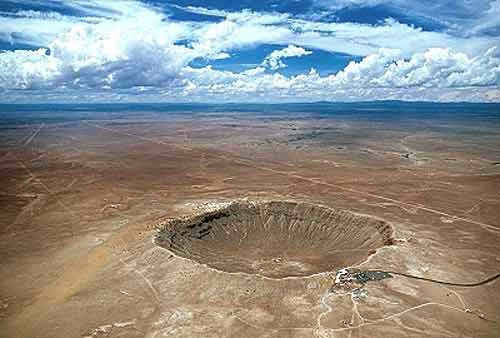
In order to grasp the enormity of such an event, let’s take a look at an example of an asteroid impact crater in Arizona:
This particular crater was created approximately 50,000 years ago when an iron asteroid, measuring 50-60 meters in diameter, collided with the Earth. The force of the explosion was equivalent to 8000 Hiroshima bombs, resulting in a crater that spans 1.2 kilometers in diameter, reaches a depth of 200 meters, and features edges that tower 40 meters above the surrounding terrain.
There was another event similar in scale to the Tunguska meteorite. The explosion had the power of 3000 Hiroshima bombs, but in this case it was caused by the fall of a small comet nucleus with a diameter ranging from tens to hundreds of meters, according to various estimates. Comet nuclei are often compared to dirty snowflakes, so there was no crater in this case. The comet exploded in the air and evaporated, causing a forest to fall over an area of 2 thousand square kilometers. If the same comet had exploded over the center of present-day Moscow, it would have destroyed all the houses up to the ring road.
Frequency of Meteor Falls: Asteroids measuring tens of meters in size fall once every few centuries, while hundred-meter asteroids fall once every few thousand years.
Apophis, the most perilous asteroid known, measures 300 meters in diameter
Even though the latest data from NASA suggests that the chances of Apophis colliding with Earth are nearly zero during its close approaches in 2029 and 2036, it is still important to contemplate the potential aftermath of its hypothetical impact. Given the existence of numerous unidentified asteroids, there remains a possibility of such an incident occurring in the future, if not this time, then perhaps another.
Against all expectations, the asteroid Apophis crashes onto our planet.
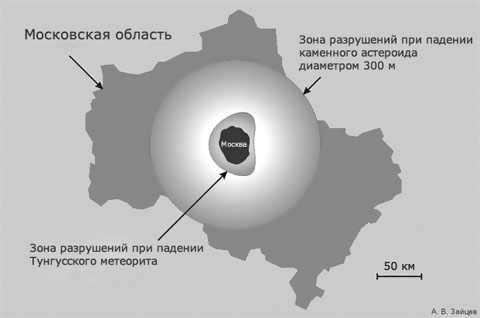
The blast possesses the strength equivalent to 15,000 Hiroshima atomic bombs. Upon impact with the mainland, a shock crater measuring 4-5 km in diameter and 400-500 meters in depth is formed, causing all brick structures within a 50 km radius to crumble. Less sturdy buildings and trees are toppled at distances ranging from 100-150 kilometers away from the impact site. A towering mushroom-shaped dust column emerges in the sky, resembling that of a nuclear explosion, reaching several kilometers in height. Subsequently, the dust disperses in various directions and gradually blankets the entire planet over the course of several days.
However, despite the exaggerated fears that often scare people through the media, nuclear winter and the apocalypse will not occur due to the small size of the “Apophis” asteroid. Based on the lessons learned from powerful volcanic eruptions that occurred relatively recently in history, these eruptions also released large amounts of dust and ash into the atmosphere. With such a powerful explosion, the impact of nuclear winter would be minimal, resulting in only a 1-2 degree drop in average global temperatures. Within six months to a year, everything would return to normal.
Therefore, the potential impact of Apophis is not a global catastrophe, but rather a regional one. If Apophis were to strike a small country, it would completely destroy it.
If Apophis collides with the ocean, it will result in a tsunami that will impact coastal regions. The height of the tsunami will be determined by the distance to the point of impact. Initially, the wave will reach approximately 500 meters in height. However, if Apophis falls in the middle of the ocean, the waves that reach the coast will be around 10-20 meters tall. This is still quite significant, and the storm with these massive waves will persist for several hours. In the event of an ocean impact near the coast, surfers in coastal and other cities could potentially ride these waves. (Apologies for the dark humor).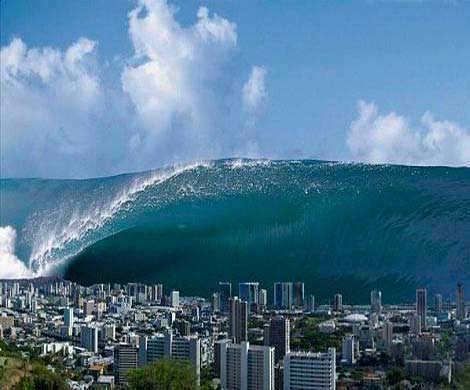
The frequency of occurrence of events of this magnitude in Earth’s history is measured in tens of thousands of years.
Now, let’s turn our attention to global catastrophes.
The situation is similar to the fall of Apophis, but the consequences are now on a much larger scale, reaching a global catastrophe of significant proportions (affecting all of mankind, but without the threat of civilization’s demise):
The explosive power of “Hiroshima”: 50,000, with a resulting crater size of 15-20 km when landing on land. The destruction zone from the blast and seismic waves extends up to 1000 km in radius.
If it were to fall into the ocean, once again, the impact would depend on the distance to the shore, as the resulting waves would be very high (1-2 km), although not long-lasting, and would dissipate relatively quickly. However, the flooded area would still be immense, covering millions of square kilometers.
The decrease in atmospheric transparency in this case will be noticeable for several years due to emissions of dust and ash (or water vapor when it falls into the ocean). In a seismic hazard zone, the effects could be worsened by earthquakes caused by explosions.
However, an asteroid of this size will not be able to alter the Earth’s axis or have any noticeable impact on the planet’s rotation period.
Despite the dramatic nature of this scenario, it is actually a rather ordinary occurrence for Earth, as it has already happened numerous times throughout its existence. The average frequency of recurrence is approximately once every 200,000 to 300,000 years.
Asteroid with a diameter of 10 kilometers – a catastrophic event of planetary proportions
- The explosive power equivalent to that of the Hiroshima bomb: 50 million
- The size of the crater formed upon impact on land: 70-100 kilometers in width, with a depth of 5-6 kilometers.
- The cracking of the Earth’s crust will extend for tens of kilometers, reaching down to the mantle (the average thickness of the Earth’s crust under plains is approximately 35 km). This will result in the eruption of magma to the surface.
- The total area of devastation could encompass several percent of the Earth’s surface.
- When the explosion occurs, the dust and molten rock will shoot up into the sky, reaching heights of tens or possibly even hundreds of kilometers. The amount of materials ejected, which measures several thousand cubic kilometers, is significant enough to cause a light “asteroidal autumn,” but not enough to trigger an “asteroidal winter” or an ice age.
- There will also be secondary craters and tsunamis formed by fragments and large pieces of rock that are expelled during the explosion.
- The impact could also cause a slight tilt in the Earth’s axis, measuring up to 1/10th of a degree, which is considered decent by geological standards.
- If the impact occurs in the ocean, it could result in a tsunami with waves reaching kilometers in height, extending far into the continents.
- If there are intense volcanic gas eruptions, there is a possibility of acid rain.
Apocalypse
This is an extremely significant occurrence in human history that necessitates an asteroid measuring 15 to 20 kilometers in diameter. One such celestial body is sufficient.
The impending glacial period will result in the demise of a majority of living organisms, although some semblance of life will persist on Earth. However, this existence will be markedly different from what it once was. As is customary, only the most resilient will endure.
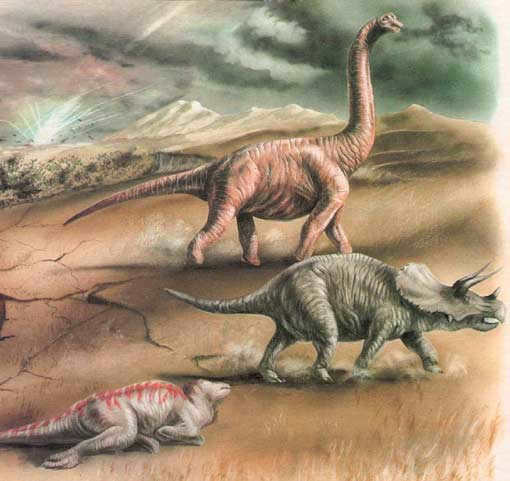
Similar incidents have occurred numerous times throughout the history of our planet. Cataclysms like these have taken place on Earth multiple times, possibly even dozens of times, since the beginning of life on our planet. The most recent one is believed to have happened approximately 65 million years ago, caused by a colossal meteorite impact known as the Chicxulub event. This cataclysm resulted in the extinction of the dinosaurs and nearly all other species of living organisms, with only a small fraction, approximately 5%, surviving, including our own ancestors.
The Complete Destruction of the World
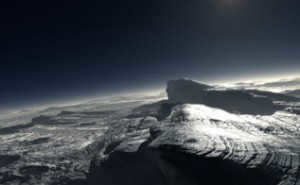
In the event that a celestial object the size of the state of Texas collides with our planet, similar to the scenario portrayed in the renowned film featuring Bruce Willis, not a single microorganism would likely endure (although it is impossible to say for certain), necessitating the rebirth and subsequent development of life.
I had intended to compose a review article about meteorites, but it ended up morphing into discussions of Armageddon scenarios. Therefore, I would like to clarify that all the aforementioned incidents, beginning with Apophis and continuing onward, are regarded as theoretically feasible, although they are not expected to occur within the next century. I have provided a thorough explanation for this in my previous post.
I’d also like to mention that the figures provided here regarding the size of the meteorite and the consequences of its impact on Earth are only rough estimates. Different sources may have conflicting data, and the initial conditions of an asteroid’s fall can vary significantly even if they have the same diameter. For instance, it is widely reported that the Chicxulub meteorite had a diameter of 10 kilometers, but I came across a reputable source suggesting that a disaster of that magnitude couldn’t have been caused by a 10-kilometer stone. Therefore, I’ve categorized the Chicxulub meteorite as being in the 15-20 kilometer range.
So, if by any chance Apophis does end up falling in the year 2029 or 2036, and the radius of the impact zone turns out to be different from what is stated here, please let me know, and I will make the necessary adjustments.
21 thoughts on “Consequences of meteorites of different diameters falling to Earth”
I reside on Vera Voloshina Street in the Moscow region. Will I survive when the Apophis meteorite hits the Earth? And how long until Apophis actually falls?
Based on various sources, the following data has been compiled:
Body diameter (average density) / crater diameter:
1km – 20km;
5km – 100km;
10km – 170km;
20km – 300km;
200km (which penetrated Mars along with three “hitchhikers”, emerged in the spot occupied by the “Olympus” volcano, and formed a chain of three volcanoes) – crater in the “Hellas” area – 2300 km
The crater on Yamal and in Chelyabinsk does not match the impact force and weight. So, if we multiply 20 meters by 100 kilograms, we get 220 tons, and then everything adds up approximately. We are currently testing a new nuclear weapon called the “bride of Satan.”
Is it possible for fragments of the Earth’s crust to overturn when a 15-20 kilometer-sized asteroid falls? If it’s not too much trouble, could you please email me the calculations and a drawing?
It’s not like the Chelyabinsk meteorite falling. It exploded in the air, and if it were to fall to the ground, it would destroy everything, but Siberia would not be affected. So, I don’t want to die, but for now, it is what it is.
I am really fascinated by the calculations, especially the fact that it will happen in Moscow:))
There seems to be an issue with the mathematics. The weight of the Chelyabinsk meteorite is approximately 10,000 tons. Only around a tenth of it actually reached the Earth, which means it was about a ton in weight.
Where can I find a methodology for estimating the consequences of large objects falling to Earth?
I am interested in calculating the potential effects of the asteroid 1989 FC “Asclepius” impacting the Earth (both on land and in the ocean).
Don’t worry. We may even be able to prevent this impact if this rock passes close to Jupiter. Jupiter has the ability to intercept objects that come near it and fling them away, so there’s a chance it could redirect the asteroid elsewhere.
And I am the proud owner of a couple of fragments from outer space, one of which is quite substantial, weighing in at 450 grams! You can only imagine the sheer joy I experienced when I stumbled upon it amidst a field of fresh strawberries. It turns out that my grandfather once witnessed a meteorite plummeting to the ground in the nearby forest approximately three decades ago. He vividly described how the fragments scattered across the surrounding fields and provided me with a detailed account of their appearance. Interestingly, my own shards bear a striking resemblance to silicon, with sporadic patches of “bloated” iron. Moreover, they are adorned with numerous silver speckles, undoubtedly composed of nickel, a prominent characteristic of meteorites. As I pondered the enormity of these celestial objects, I couldn’t help but wonder about the size of the meteorite that wiped out the dinosaurs. I turned to my wall map for answers, only to discover that our planet, represented on the map, has a diameter of 1.5 meters, while the meteorite itself measures a mere 1 mm in length. Is this some kind of joke, dear scientists? Surely, there is more to this story that we have yet to uncover…
The information provided is incredibly accessible, offering a comprehensive understanding of the subject matter. The scenarios presented align closely with scientific assumptions, which is greatly appreciated. Thank you for shedding light on this fascinating topic.
It piques my curiosity to speculate on the size of an asteroid that would be capable of generating a cataclysmic heat wave capable of enveloping the entirety of our planet.
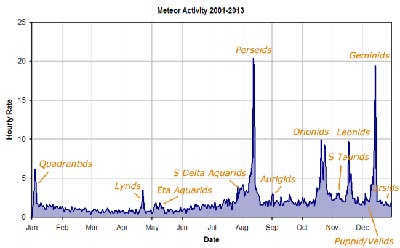
Hello!
Please provide me with the original source of the information:
"Several dozen small meteorite fragments (approximately 100 grams each) can fall to Earth as cosmic precipitation in a single day." I have extensively searched the Internet but have been unable to find any relevant information. The only available data pertains to meteorite fragments weighing 4 grams or less. Thank you!
The exact size of Texas is not particularly relevant in the context of this post, as a few dozen kilometers would suffice for the end of the world. Nonetheless, out of curiosity, I measured the state’s length using a ruler on Google Earth: it extends 1300 km from one corner to another.
Everyone seems to know how large the state of Texas is.
By the way, what is the diameter of the meteorite (in kilometers) that is being compared to the state of Texas?
To add a comment, you must first log in.
While orbiting, our planet periodically crosses paths with small solid objects, causing them to fall onto its surface. While a space object is in the Earth’s atmosphere, it is referred to as a meteor, but if any part of it reaches the surface, it becomes a meteorite. Meteorites are objects that have a radius of only a few meters, and they differ from asteroids only in terms of size. Throughout history, countless numbers of these objects have fallen to Earth. The highest frequency of falls occurred during the planet’s first billion years. In present times, the flow of meteorites is very weak, and it mainly manifests as dust particles that successfully burn up in the atmosphere. However, some visitors still manage to reach the Earth’s surface.
The Process of Meteorite Falls
When meteorites enter the Earth’s atmosphere, they experience incredible speeds ranging from 11 to 73 km/sec. As they travel through the atmosphere, friction causes combustion, resulting in the meteorite losing mass. Eventually, the meteorite collides with the Earth’s surface at velocities as high as 2000 to 4000 m/sec. This impact releases a tremendous amount of energy, causing both the meteorite and surrounding rocks to vaporize. The force of the impact also creates explosive reactions, forming distinctive rounded craters.
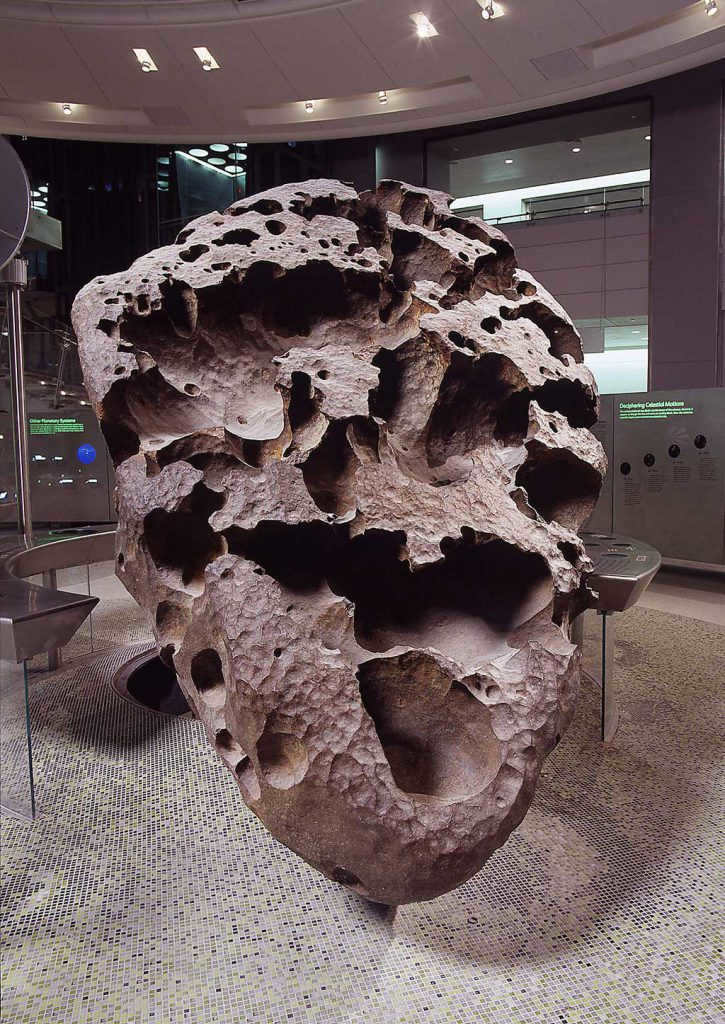
Craters are always larger than the size of the meteorite that falls into them, and there are changes in the mineral structure and composition in the surrounding rocks. However, when a meteorite falls at a relatively low speed (around a few hundred meters per second), the release of energy is not significant, and the diameter of the crater is similar to the size of the meteorite itself. In such cases, the meteorite can remain well-preserved.
Meteor showers
When a meteoroid disintegrates in the Earth’s atmosphere, numerous small fragments descend to the planet’s surface, creating craters – this occurrence is known as a meteor shower.
The distinction between meteor showers and meteor showers is that meteors do not make it to the Earth’s surface, whereas a meteor shower has the potential to inflict significant damage.
Composition of Meteorites
- Rocks and Chondrites – Chondrites, named after their silicate formations, make up the majority of meteorites. The composition of chondrites is similar to that of the Sun, with the exception of helium and hydrogen. Scientists believe that chondrites formed in the protoplanetary cloud. Another type of meteorite, achondrites, resemble terrestrial basalts and are thought to originate from the asteroid Vesta, as well as Mars and the Moon.
- Iron – Iron meteorites consist primarily of nickelized iron. It is estimated that this structure forms when the material, with a temperature range of 600°C to 400°C, cools by 1°C to 10°C every one million years.
- Ironstones: 1) Pallasites. Olivine crystals are found within a base of iron and nickel. P. Pallas was the initial person to document these objects near Krasnoyarsk. 2) Mesosiderites. These formations consist of equal proportions of nickel, iron, and silicates. They are an exceptionally uncommon kind of meteorite, with only a small number of instances of their descent being documented.
The vast majority of meteorites are classified as rock meteorites (92.8% of falls), and the majority of these are chondrites. Chondrites make up 85.7% of the total number of meteorite finds. Achondrites account for 7.3% of meteorites, iron meteorites make up 5.7%, and iron-silicate meteorites make up 1.5% of all meteorite falls. Achondrites, iron meteorites, and iron-silicate meteorites are considered to be differentiated meteorites, meaning that the materials they are composed of underwent differentiation alongside asteroids or other planetary bodies. Previously, it was thought that such meteorites formed from the breakup of one or more large bodies, with the hypothetical planet Phaeton being the main candidate. However, analysis of the composition of various meteorites led to the conclusion that they were formed from fragments of different asteroids.
Exploring the Presence of Organic Compounds in Meteorites
Meteorites Discovered in Russia
- Tunguska. On June 30, 1908, an unidentified object made its way to the basin of the Podkamennaya Tunguska river. Despite extensive efforts, no fragments of the object were recovered, suggesting that it may have exploded upon impact with the Earth’s surface. The explosion was estimated to have released an energy equivalent to 50 megatons.
- Tsarev. On December 6, 1922, a stone meteorite fell near the village of Tsaryov in the Volgograd region. The meteorite disintegrated into several pieces, with the largest fragment weighing 284 kg. The total mass of the meteorite was approximately 1.6 tons.
- Sikhote-Alin. This iron meteorite had a total mass of 30 tons and released an estimated energy of 20 kilotons. It fell on February 12, 1947, in the remote Ussuri taiga region.
- Chelyabinsk. On February 15, 2013, a meteorite fell near Chelyabinsk. Its largest fragment weighed 654 kilograms.
Record holders
The oldest meteorite is a two-ton extraterrestrial object that crashed to Earth 1.9 billion years ago. It landed in the city of Xi’an, China, and is locally known as Mount Huashitai.
The largest iron meteorite, Goba, descended to Earth in 1920 in Namibia. It weighed a massive 60 tons.
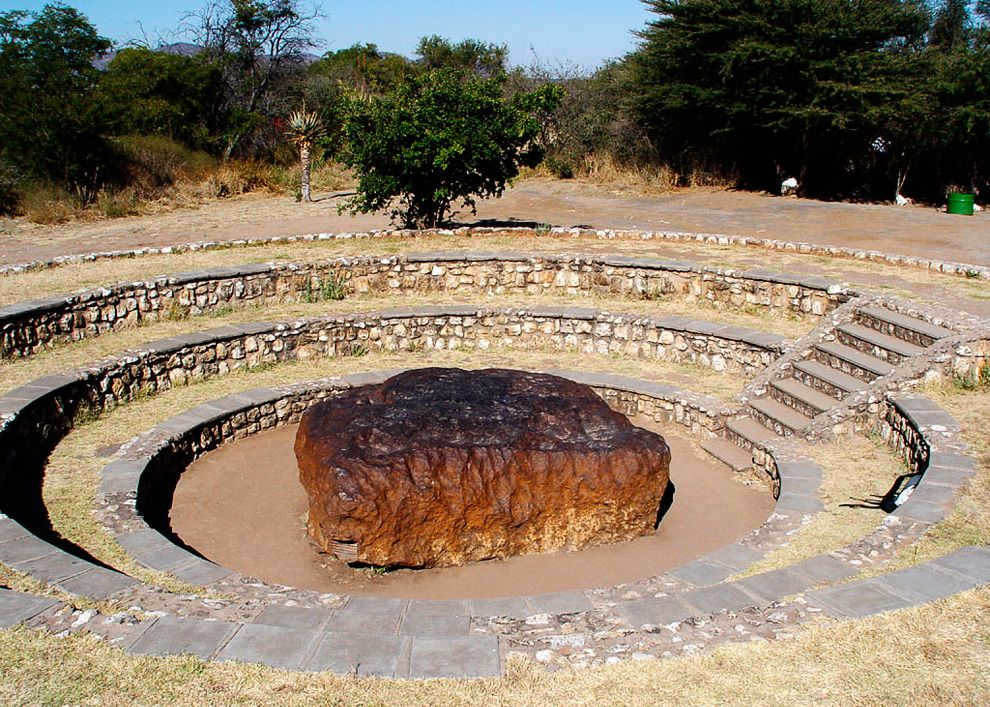
In Antarctica, the highest concentration of meteorites can be found. Experts estimate that there are approximately 700 thousand celestial wanderers scattered across its surface. These meteorites can be considered as literal “deposits”.
The most severe meteor shower took place between November 12 and November 13, 1833. It lasted for 10 hours, during which 240 thousand meteorites, both large and small, fell from the sky.
The largest meteor crater formed approximately 50,000 years ago in Arizona, USA. It has a diameter of about 1.5 km and a depth of almost 200 meters. The weight of the celestial body that left such a significant mark was estimated to be around 10 thousand tons!
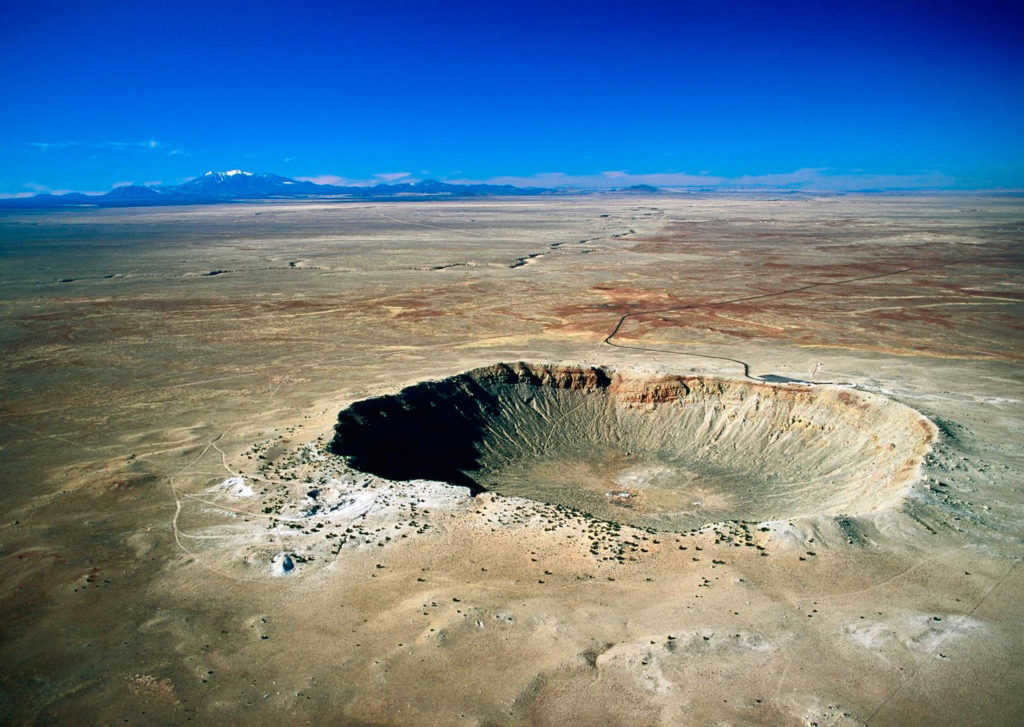
A variety of extraterrestrial visitors can be found dislodged from the rocky surfaces of both Mars and the Moon, serving as a unique form of salutation from our neighboring celestial bodies.
To sum up, here is a brief documentary presented by the Discovery Channel:
If you have any controversial points about the movie, feel free to share them in the comments.

wallpapershome.co.uk
After nearly thirty years, a farmer in Michigan, USA, placed a ten-kilogram stone against his door that had been lying on his property for many years. However, when he eventually took it to the local university, he was astounded to discover that the stone was actually a meteorite! Experts valued the “prop” at $100,000. With his hands raised in the air, the farmer expressed his gratitude to the heavens for sending him such a fortunate surprise…
Arrived at the royal residence
The heavens graciously bestowed upon the land of Belarus. Not long ago, while renovating the stone enclosure of the Sapiegh palace in Ruzhan, construction workers unearthed a weighty obsidian stone from the masonry. Expert analysis confirmed that it was a celestial object that had descended upon the Earth 125 years ago. In 1894, a local newspaper documented a brilliant burst of light and an extraordinary resounding noise. The meteorite, currently on display at the museum within the Sapeg Palace complex, is appraised at nearly $300,000.
Even in this day and age, the Bragin district attracts young individuals equipped with metal detectors, predominantly hailing from Ukraine and Russia. Even a minuscule piece of stone, “adorned with iron,” can easily justify all of their expenditures. The typical price for a basic meteorite is $50 per gram. Additionally, “extraterrestrial” objects originating from the Moon and Mars are valued at nearly 40 times the price of gold. However, it is important to note that engaging in such amateur prospecting activities is against the law and carries severe consequences.
In the midst of blazing flames
Around 65 million years ago, our planet was struck by a colossal asteroid measuring ten kilometers in diameter. The resulting dust cloud darkened the skies for several years, leading to the extinction of numerous animal species, including the mighty dinosaurs.
Located in Africa’s Namibia, the Goba meteorite crash-landed here around 80,000 years ago, journeying from the depths of the cosmos. Its discovery took place in 1920, and it weighed an astonishing 66 tons, with a volume of 9 cubic meters. Imagine the terror it instilled in the local population. This extraterrestrial entity, composed of 80 percent iron, stands as the heaviest meteorite ever to grace our planet’s surface. A fence surrounds the Goba meteorite, attracting countless tourists from across the globe.
On June 30, 1908, at around seven o’clock in the morning, a massive fireball streaked through the sky from the southeast to the northwest in the vicinity of the Podkamennaya Tunguska river in the Yenisei basin. This extraordinary phenomenon culminated in a tremendous explosion above the taiga, approximately 7-10 kilometers above the ground. The impact of this explosion was so powerful that it was detected by observatories all around the world. The aftermath of the event was devastating, with windows shattering in houses and trees toppling over across an area spanning over 2000 square kilometers. The effects of the explosion were visible for several days, as luminous clouds and a vibrant glow illuminated the sky from the Atlantic to Central Siberia.
In October 2009, a meteorite measuring about 10 meters in diameter detonated at an altitude of 10-12 kilometers in Indonesia. The force of this explosion was twice as powerful as the atomic bomb dropped on Nagasaki.
On February 15, 2013, the city of Chelyabinsk experienced a cosmic “kiss”. According to calculations made by NASA, the explosion that took place when the meteorite entered the Earth’s atmosphere over the Chelyabinsk region had a power of 300 to 500 kilotons – which is approximately 20 times stronger than the atomic bomb dropped on Hiroshima. The impact resulted in extensive damage to hundreds of buildings and over 1,000 people suffering injuries of varying severity…
The descent of even a small celestial object can lead to significant trouble or even tragedy.
In November 1954, a 3.9-kilogram meteorite crashed through the roof of a house in Alabama, USA. It struck a radio before bouncing off and passing through the arm and leg of a woman who was dozing on the couch. Thankfully, the meteorite had lost enough momentum and only left bruises on her body.
In October 1992, just 40 miles away from the bustling city of New York, a meteorite, measuring the same size as a soccer ball, managed to pierce through a car, coming just centimeters away from the gas tank. The young woman who happened to be sitting behind the wheel not only experienced a great scare but also found herself in the spotlight, receiving an overwhelming amount of publicity. To add to the unexpected turn of events, she even received offers to sell the meteorite for a price that far exceeded the actual value of her car.
Fast forward to February 6, 2016, a catastrophic explosion took place within the premises of a renowned lyceum located in the Indian state of Tamil Nadu. The aftermath of the explosion was devastating, with shattered glass in the windows within a 400-meter radius. Tragically, three individuals were injured, while the bus driver lost his life in the incident. Surprisingly, upon conducting an autopsy on the bus driver’s crushed skull, no shrapnel was found. After thorough investigation and examination of samples collected from the scene, scientists came to the conclusion that the calamity was caused by a celestial object originating from outer space.
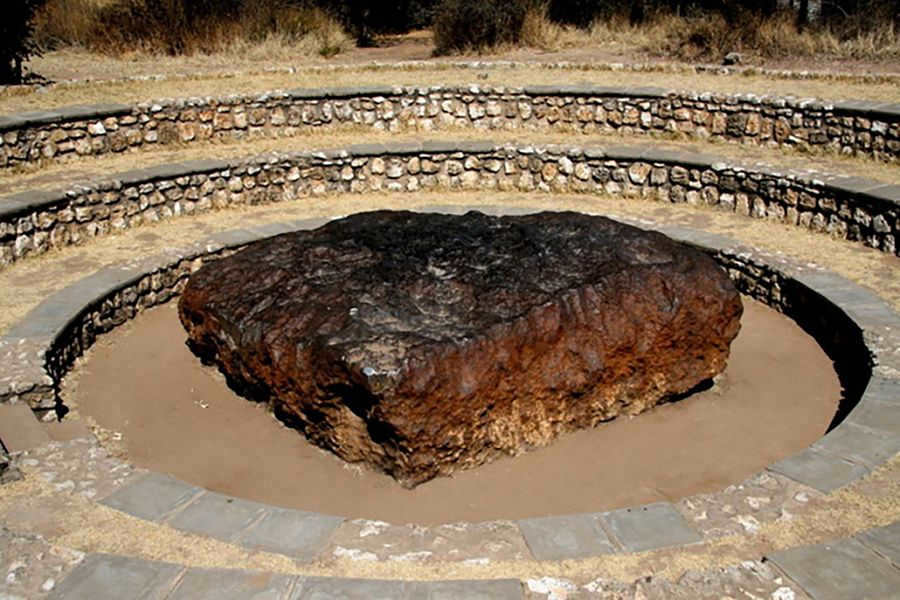
During the last two decades, there have been 16 instances of meteorite falls on residential roofs and garages in the United States and Canada. Out of these, 7 incidents resulted in the need for repairs to the affected buildings and vehicles. Interestingly, one small stone weighing 1.3 kilograms even managed to land in a mailbox, delivering a rather unexpected “letter”! Another noteworthy meteorite event took place in Namibia, known as the Goba meteorite.
You cannot escape the path that is destined for you
Some meteors have the ability to impact people even when they are in the vastness of the ocean. In the year 1908, a celestial traveler, approximately the size of a human head, collided with the English barque named “Eclipse”. The crew of the ship managed to extinguish the resulting fire, however, they were unable to repair the extensive damage caused by the impact. As a result, they were forced to abandon the ship and continue their journey using small boats, rowing manually for a distance of approximately 900 miles. Another meteorite, even larger than the previous one, managed to effortlessly penetrate the sailing vessel known as the Sigittarius. The ship rapidly sank, leaving the crew with no choice but to urgently transfer themselves to lifeboats. Fortunately, they were rescued by another passing ship a few days later.
Martians
In 1911, the initial Martian meteorite called “Nakhla” was discovered in the Egyptian desert. Scientists estimate that it is approximately 1.3 billion years old. These types of rocks are propelled into space when large asteroids impact Mars or during massive volcanic eruptions. Around 500 kilograms of Martian rocks descend to Earth annually.
Scientists speculate that every day, numerous tons of meteoric material descend to Earth. However, land only covers 29 percent of our planet’s surface, and not all areas are inhabited by humans, making a meteorite falling within the inhabited zone a great rarity. Nonetheless, not all “cosmic messengers” that plummet to Earth at speeds of tens of kilometers per second and heat up to glowing temperatures carry with them “celestial grace.”
A wide variety of meteorites can be categorized into three primary groups: iron, stone, and iron-stone. Nearly all of them contain iron and nickel.
Meteorites possess several notable external features, including fusion crust, regmaglypts (distinctive surface depressions), and magnetism. Fusion crust develops as a meteorite travels through Earth’s atmosphere, causing the celestial object to heat up to approximately 1800 degrees Celsius. It forms a thin layer of melted and solidified meteorite material. Typically, the fusion crust appears black in color with a matte surface, while the interior of the meteorite is lighter in color.
According to experts, many large lakes are actually water-filled sinkholes formed by the impact of massive meteorites.
Copying and reproducing the text and images in their entirety is strictly forbidden. However, partial quoting is permitted as long as a hyperlink to the original source is provided.
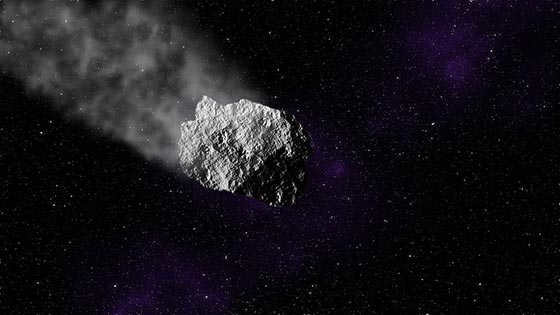
The majority of modern individuals reside in large urban areas, where even during the nighttime, the illumination from street lamps and advertisements persists. We are primarily able to observe the magnificent starry sky during the summer nights, when we venture out of the congested city to coastal resorts or the tranquility of countryside retreats.
During the summer months, it is typically the time for meteor showers, which generously provide us with the enchanting spectacle of shooting stars, known as meteorites in the field of astronomy. Or are they called meteors? Let’s attempt to comprehend.
What is a meteorite?
A meteorite is a cosmic object that has landed on the surface of the Earth or another planet. It is a solid body that can range in size from a few centimeters to several meters. However, larger meteorites often break apart upon entering the Earth’s atmosphere and scatter into numerous fragments. Astronomers estimate that at least 5 tons of meteorites of varying sizes fall to the Earth’s surface every day.
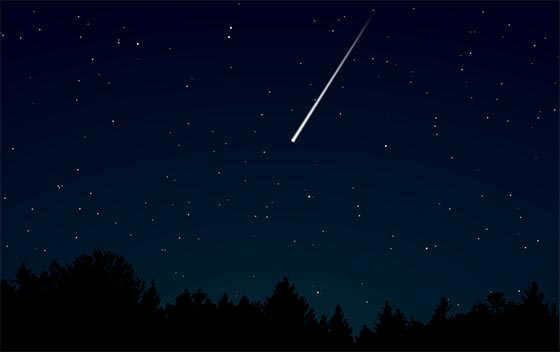
For a long time, the scientific community did not acknowledge the existence of “celestial stones”. In fact, the Paris Academy went as far as passing a resolution in the late 18th century, deeming the extraterrestrial origin of meteorites as pseudoscientific. It was only in the mid-19th century that the scientific world officially recognized their existence.
Presently, there is a dedicated committee under the Russian Academy of Sciences that focuses on the collection and study of meteorites.
Usually, meteorites are made up of iron and/or mineral rocks, and their chemical composition is surprisingly consistent. In general, meteorites contain compounds of calcium, silicon, aluminum, magnesium, sulfur, nickel, and iron combined with oxygen. Most minerals found in meteorites are the same as those found on Earth, although occasionally some are discovered that have never been seen in the planet’s rocks.
Iron meteorites are notable for their high purity and remarkable metal properties. They are virtually free of rust and have excellent malleability. In ancient times, finding iron meteorites was considered a great stroke of luck: they were used to create exceptional swords and sabers, the quality of which was nearly unmatched by primitive ancient metallurgy.
What occurs in the event of a meteorite impact?
Recent years have witnessed the occurrence of a colossal meteorite fall, leading to the emergence of numerous alarmist narratives that captivate the general public through media outlets. The fascination with these celestial rocks has notably intensified following the Chelyabinsk meteorite incident, which undeniably sent shockwaves across the globe.
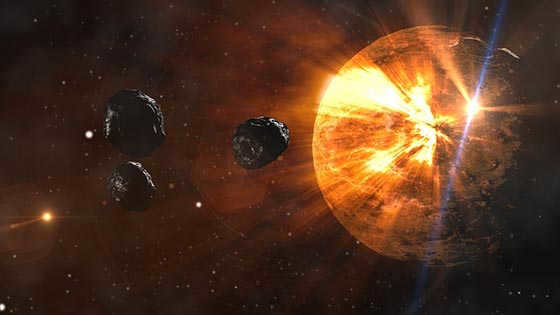
What sets a meteorite apart from a meteor?
Meteor and meteorite are closely related concepts, but they are not exactly the same. Both are formed from a meteoroid – a rock or fragment of rock that travels through space. When a meteoroid enters the Earth’s atmosphere, it collides with atoms in the air.
As a result of these collisions, the meteoroid gradually heats up and begins to emit light – this is what we see as a meteor, the visible trail left by a celestial body passing through the atmosphere. When the meteoroid lands on the ground, it becomes a meteorite, a celestial rock that can be studied or added to a collection.
What sets apart a meteorite from an asteroid?






